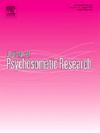The relationship between menstrual pain in adolescence and mental health in adolescence and early adulthood
IF 3.5
2区 医学
Q2 PSYCHIATRY
引用次数: 0
Abstract
Objectives
Approximately 70 % of adolescents worldwide experience menstrual pain (dysmenorrhea), with significant impacts on quality of life. This prospective study aimed to explore the relationship between mental health and dysmenorrhea in Australian adolescents.
Design
Female adolescents in a nationally representative sample of Australian children (the Longitudinal Study of Australian Children) recruited in 2004 were included in the Kinder cohort (aged 4–5 years at enrolment).
Participants
Survey data for 1600 participants from Wave 4 (age 10) to Wave 9C2 (age 21) were included in this study. Parents and adolescents completed questionnaires and interviews at each wave.
Main outcome measures
For this study, questions included age of menstruation onset, dysmenorrhea severity, symptoms of anxiety and/or depression (parent-report and adolescent-report), and psychological distress (adolescent-report).
Results
Adolescents with dysmenorrhea were more likely to have anxiety (odds ratios 1.75–1.82) and more likely to have depression (odds ratios 2.03–2.89) than adolescents without dysmenorrhea at ages 14, 16, and 18. Adolescents with dysmenorrhea at ages 14, 16, and 18 reported higher levels of psychological distress, with scores 2.99 to 3.34 points higher on a self-report measure (K10) in early adulthood than adolescents without dysmenorrhea (p < 0.001). Longitudinal analyses revealed that adolescents with dysmenorrhea were more likely to develop mental health concerns in later adolescence and early adulthood (χ2 = 17.26, p < 0.001), while those with mental health concerns were not more likely to develop dysmenorrhea (χ2 = 0.49, p = 0.48).
Conclusion
This study highlights that adolescents who experience dysmenorrhea are at significantly greater risk of experiencing mental health problems both in adolescence and in early adulthood. Improved treatment for dysmenorrhea, menstrual education, mental health monitoring, and early intervention are essential to reduce this risk.
青春期经期疼痛与青春期和成年早期心理健康的关系
全球约70%的青少年经历月经疼痛(痛经),对生活质量有显著影响。本前瞻性研究旨在探讨澳大利亚青少年心理健康与痛经的关系。2004年招募的具有全国代表性的澳大利亚儿童样本(澳大利亚儿童纵向研究)中的女性青少年被纳入Kinder队列(入组时年龄为4-5岁)。本研究纳入了从第4波(10岁)到第9C2波(21岁)的1600名参与者的调查数据。父母和青少年在每一波完成问卷调查和访谈。本研究的主要结局指标包括月经开始的年龄、痛经严重程度、焦虑和/或抑郁症状(家长报告和青少年报告)以及心理困扰(青少年报告)。结果在14岁、16岁和18岁时,有痛经的青少年比没有痛经的青少年更容易焦虑(比值比1.75-1.82),更容易抑郁(比值比2.03-2.89)。14岁、16岁和18岁有痛经的青少年报告的心理困扰水平更高,成年早期自我报告测量(K10)的得分比没有痛经的青少年高2.99至3.34分(p <;0.001)。纵向分析显示,患有痛经的青少年在青春期后期和成年早期更容易出现心理健康问题(χ2 = 17.26, p <;0.001),而那些有心理健康问题的人不太可能出现痛经(χ2 = 0.49, p = 0.48)。结论本研究强调经历痛经的青少年在青春期和成年早期经历心理健康问题的风险显著增加。改善痛经治疗、经期教育、心理健康监测和早期干预对降低这种风险至关重要。
本文章由计算机程序翻译,如有差异,请以英文原文为准。
求助全文
约1分钟内获得全文
求助全文
来源期刊
CiteScore
7.40
自引率
6.40%
发文量
314
审稿时长
6.2 weeks
期刊介绍:
The Journal of Psychosomatic Research is a multidisciplinary research journal covering all aspects of the relationships between psychology and medicine. The scope is broad and ranges from basic human biological and psychological research to evaluations of treatment and services. Papers will normally be concerned with illness or patients rather than studies of healthy populations. Studies concerning special populations, such as the elderly and children and adolescents, are welcome. In addition to peer-reviewed original papers, the journal publishes editorials, reviews, and other papers related to the journal''s aims.

 求助内容:
求助内容: 应助结果提醒方式:
应助结果提醒方式:


